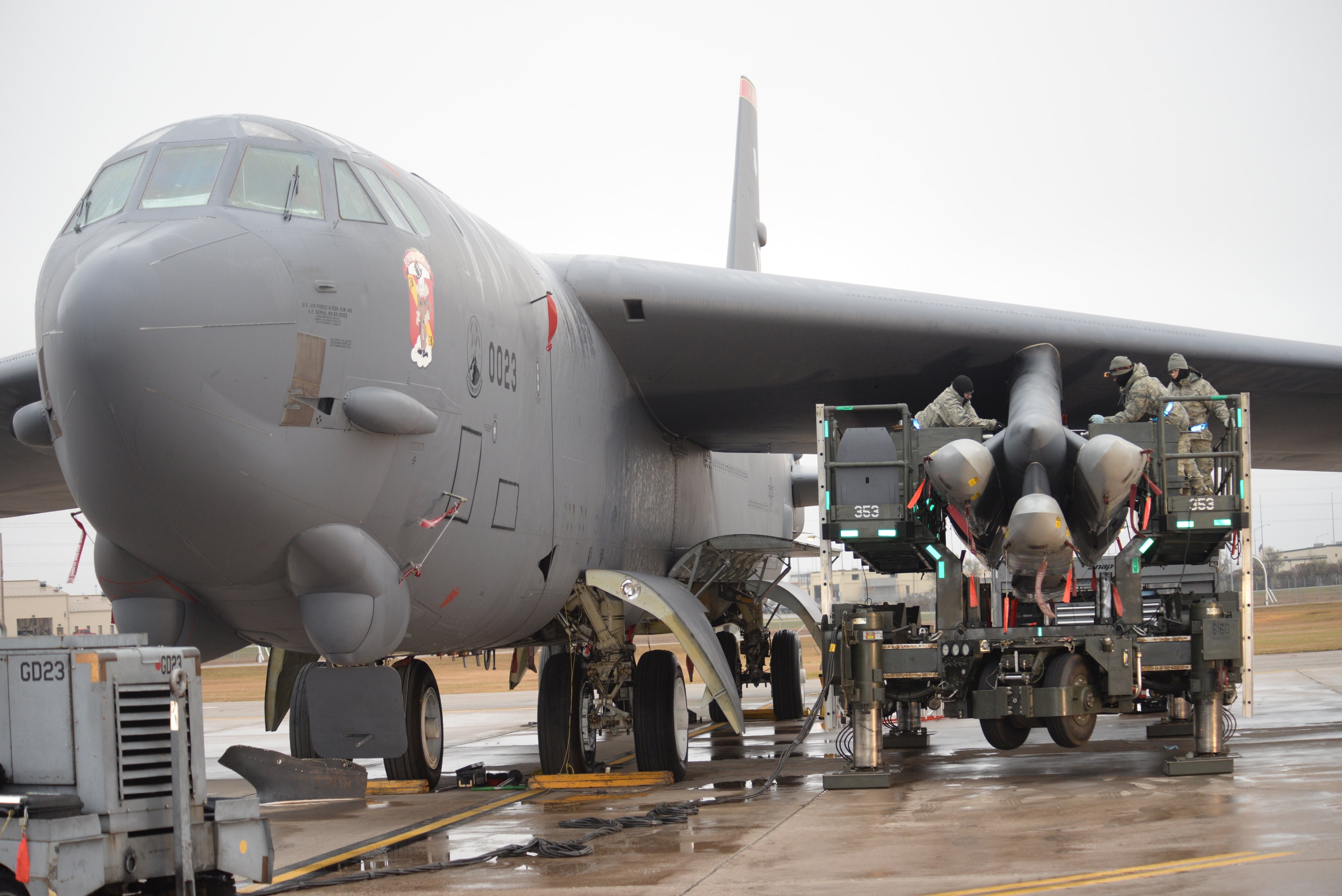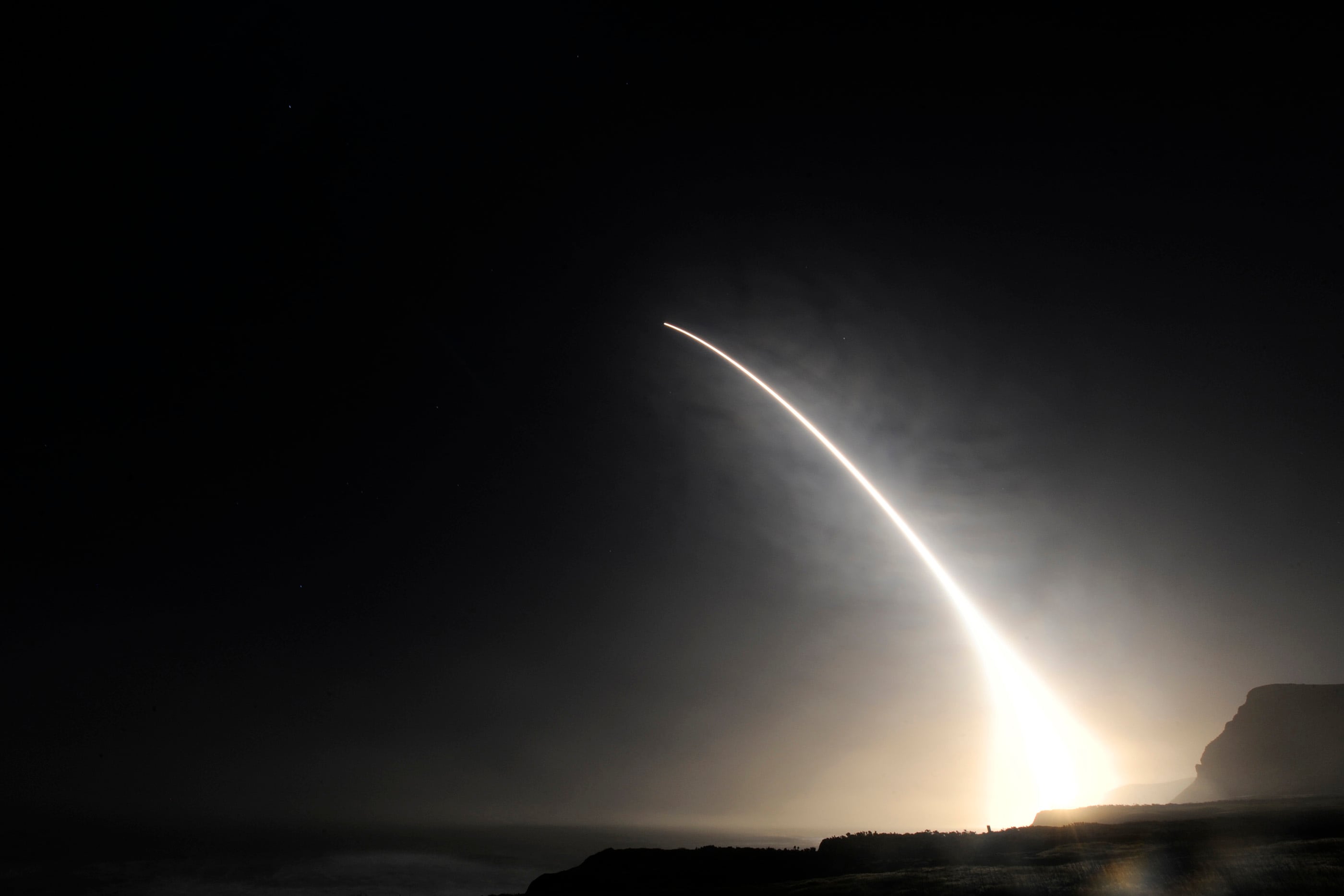WASHINGTON — The Air Force on Wednesday awarded contracts to Lockheed Martin and Raytheon for work on a new, nuclear-capable cruise missile known as the Long Range Standoff weapon or LRSO.
Each company will rake in about $900 million for a 54-month technology maturation and risk reduction phase, the Air Force said in a statement. Because the LRSO program is highly classified — even more so than the service’s program for new intercontinental ballistic missiles — it declined to release the exact value of its contracts to Lockheed and Raytheon.
LRSO will replace the AGM-86B air-launched cruise missile, oftentimes referred to as the ALCM, which became operational in the early 1980s. The Air Force says its current inventory of ALCMs is still safe to use despite the fact that the weapon only has a 10-year lifespan. However, it has become less effective as enemies bolster their own air defenses and is harder to maintain, as suppliers dry up and parts go obsolete.
“This weapon will modernize the air-based leg of the nuclear triad,” Air Force Secretary Heather Wilson said in a statement. “Deterrence works if our adversaries know that we can hold at risk things they value. This weapon will enhance our ability to do so, and we must modernize it cost-effectively.”
RELATED

In fiscal year 2022, the Air Force will choose between Raytheon and Lockheed for LRSO’s engineering, manufacturing and development phase. The service currently intends to integrate the weapon with its nuclear-capable bombers— the B-52, B-2 and B-21 — with initial fielding slated for the late 2020s.
“LRSO will provide the next generation strategic deterrent missile for the air-launched portion of the nuclear triad,” said David Helsel, Lockheed’s LRSO program director. “Lockheed Martin’s proven experience in cruise missile and strategic systems technologies will provide the most reliable, capable, sustainable and affordable program in defense of our nation and our allies.”
A spokesman for Raytheon declined to comment on the award.
The contract announcement was bad news for Boeing, the manufacturer of the current ALCM. Boeing spokeswoman Didi VanNierop said the company was “disappointed” by the news and is awaiting more information from the Air Force regarding its decision. After being briefed by the service, the company will have 10 days to file a protest with the Government Accountability Office.
Northrop Grumman was also widely thought to have bid on the contract, but a spokesman for the company could not confirm this by press time.
Although the LRSO program has only just begun, it has been harshly criticized by some congressional Democrats who argue the weapon is too expensive and say that having a cruise missile capable of both conventional and nuclear attacks could increase the risk of miscalculation.
RELATED

In March, Sen. Ed Markey of Massachusetts and nine other Democrats introduced legislation that would slow-roll funding for LRSO until the Trump administration finalizes its nuclear posture review. The bill mandates that funding remained capped at fiscal year 2017 levels — at about $96 million — until the Trump administration finalizes its nuclear posture review. That could have a chilling effect on the program’s progess, which is supposed to shoot up in $451 million in FY18.
However, that bill has stagnated since being referred to the Senate Armed Services Committee. A similar measure was proposed in the House by Democratic Rep. Earl Blumenauer, of Oregon, during debate on the defense authorization bill, but was defeated 169 to 254.
Supporters of LRSO have argued that existing air-launched cruise missiles are similarly dual purpose, but have not resulted in nuclear war during their decades of use. Air Force leaders have also said the bomber force needs the capability so that operators can strike from standoff distances.
RELATED

LRSO is the second major nuclear program to have a contract awarded this week. On Monday, the Air Force tapped Boeing and Northrop for technology maturation activities associated with the Ground Based Strategic Deterrent program, which will replace the current Minuteman III ICBMs.
Valerie Insinna is Defense News' air warfare reporter. She previously worked the Navy/congressional beats for Defense Daily, which followed almost three years as a staff writer for National Defense Magazine. Prior to that, she worked as an editorial assistant for the Tokyo Shimbun’s Washington bureau.








